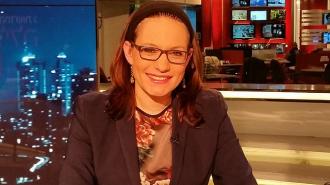Video footage released Saturday shows Keith Lamont Scott taking four steps slowly backward with his arms at his sides when he is hit in a burst of four gunshots from police, then crumples to the pavement.
From neither vantage point – a police dashboard camera and a body camera worn by one of the officers on the scene – can it be determined whether Scott is holding a gun.
But police can be heard repeatedly shouting “Drop the gun!” at the 43-year-old Scott, who died from his wounds Tuesday as his wife stood nearby.
Charlotte-Mecklenburg Police Chief Kerr Putney released the videos Saturday after a tumultuous week of protests and two nights of street violence spurred by the shooting.
In the dashboard video, a police SUV can be seen pulling into the parking lot where Scott’s white SUV is parked. An officer in a red shirt is visible pointing his weapon at Scott’s vehicle, whose tinted windows are up.
In a deadly tableau lasting about three seconds, Scott, surrounded by officers at varying distances, then opens his door, steps out, turns and walks backward, hands at his side. Four shots are heard and he falls.
In neither video is the resolution good enough to show whether Scott was holding a weapon, nor does either show the officer firing at him.
A body cam on another officer at the scene shows Scott emerging from the SUV, then lying in the parking lot seconds later. Police handcuff him while Scott’s wife can be heard yelling at police, “He better be alive!”
Marijuana keyed action
Scott drew the attention of officers who were trying to serve an arrest warrant on an unrelated suspect at the Village at College Downs apartment complex in University City because they saw him rolling marijuana in his vehicle, Chief Kerr Putney said Saturday.
Police were going to let it go and continue on their original mission until an officer spotted a weapon in the vehicle, Putney said.
“It was not lawful for him to possess a firearm,” Putney said. “There was a crime he committed and the gun exacerbated the situation.”
Officer Brentley Vinson, who Putney said fired four shots at Scott, was not wearing a body cam, so his visual perspective was not part of the footage. Putney said that body cameras are being rolled out across the department and not all tactical officers have them yet.
Putney said the footage supports the larger fabric of evidence in the case, which includes accounts from officers at the scene, forensics and interviews with witnesses.
He said he has found nothing to indicate that inson acted inappropriately, given the totality of the circumstances, and he does not think his officers broke the law that day.
They were, he said, reacting to what appeared to be an imminent threat.
“At every encounter, people can make a decision to follow lawful, loud verbal commands and avert some things like this,” he said.
Police Chief: 'He absolutely was in possession of a handgun'
Charlotte-Mecklenburg Police Chief Kerr Putney speaks to the media before releasing footage of a police shooting.
Details of encounter
Police on Saturday gave this account of the fatal encounter:
Two officers in plain clothes were in an unmarked car waiting to serve a warrant when Scott’s white SUV pulled in beside them.
They saw Scott roll what they believed to be “a marijuana ‘blunt.’ ” They returned to watching for their suspect, then Vinson saw Scott hold up a gun.
They withdrew to a spot nearby and put on duty vests that said “Police” that would identify them as officers.
When they came back, Scott still had the gun. They identified themselves as police officers, the department said, and told him loudly and repeatedly to drop the weapon. Scott did not comply.
Then a uniformed officer in a marked SUV drove up to assist, and an officer started pounding on the front passenger window.
Scott then got out with the gun and backed away from the vehicle, police said, but did not drop the weapon.
“Officer Vinson perceived Mr. Scott’s actions and movements as an imminent physical threat to himself and the other officers,” police said in a statement. “Officer Vinson fired his issued service weapon, striking Mr. Scott. Officers immediately rendered first aid and requested Medic to respond to the scene.”
Police said multiple witnesses interviewed by homicide detectives heard the police shouting at Scott to drop the gun.
Scott’s DNA and his fingerprints were found on the loaded gun recovered at the scene. Scott was wearing an ankle holster, police said.
Family response
Family members of Scott said they still have more questions than answers.
“It does not make sense to us how this incident led to loss of life,” said Scott’s brother-in-law, Ray Dotch, who spoke at a press conference called by the Scott family after the videos were released. “He was an American citizen and he deserved better.”
Lawyers for the Scott family said the videos do not clearly identify what, if anything, Scott had in his hands. CMPD said he was holding a handgun, but the family believes he was unarmed, the lawyers said.
When CMPD released the videos Saturday night, they also released photos of a handgun, ankle holster and marijuana blunt they said were in Scott’s possession at the time of the incident. The gun was loaded, they said.
Debate over release
Widespread calls were heard during the week for release of the police video footage from civic and political quarters – and even street protesters who chanted “Release the tapes!” repeatedly outside CMPD headquarters and in marches.
On Friday, attorneys for Scott’s family released a dramatic cellphone video taken by Rakeyia Scott during her husband’s shooting.
In it, she can be heard pleading with officers not to shoot as they barked commands at Scott to drop his gun.
Putney said the appearance of that footage had no impact on his decision to release the police videos.
He said he decided to release the videos in the interest of transparency and because the State Bureau of Investigation, which is leading the inquiry in the case, had completed key interviews with witnesses and assured him the release would not harm the integrity of their probe.
“Doing so before this would have had a negative impact on the investigation,” he said.
In the aftermath of Scott’s death, Charlotte was roiled by several nights of protests. After street violence on Tuesday and Wednesday night, dozens of arrests and the death of one man in uptown, Gov. Pat McCrory declared a state of emergency.
Hundreds of National Guard and State Highway Patrol officers were sent into the city to restore calm and a midnight-to-6 a.m. curfew was announced.
McCrory, who recently signed a law, going into effect Oct. 1, that sets new limits on public access to police videos, said he agreed with Putney’s decision to release the tapes.
“We have appreciated the ongoing dialogue and teamwork between state and city officials,” McCrory said, “to seek public transparency while protecting the integrity of the investigation and the rights of all parties involved in this case.”
May help healing
U.S. Rep. Alma Adams, D-N.C., whose district includes parts of Charlotte, said she hoped the release would lead to healing dialogue.
“We all deserve the truth, justice and a way forward so that we can heal and become an example of a city that emerges stronger and safer because we choose to address our problems,” she said, “even after all the television cameras have gone.”
Police had shown Scott’s family two videos Thursday. Through their attorneys, the family requested they be immediately released to the public.
Justin Bamberg, one of the family’s lawyers, said after viewing the police tapes that he felt Scott’s demeanor was calm and non-aggressive.
Another video whose source couldn’t be immediately determined but appeared to be by a resident of the apartment complex, shooting from a balcony, hit social media on Friday showing police moving around Scott’s body.
Also at issue is a photograph that circulated this week on social media, and was shared by CMPD, showing a dark shape near Scott’s feet. Some have said the shape is a weapon. That shape does not seem to appear in Rakeyia Scott’s video, but an officer in a red shirt appears to step into that area, then anchor his left foot there as other officers move around the body.
Neither police video shows any weapons on the ground, but they are well positioned to cover the area in question.
Teddy Kulmala of the Rock Hill Herald and Anna Douglas of the McClatchy Washington Bureau contributed.

















